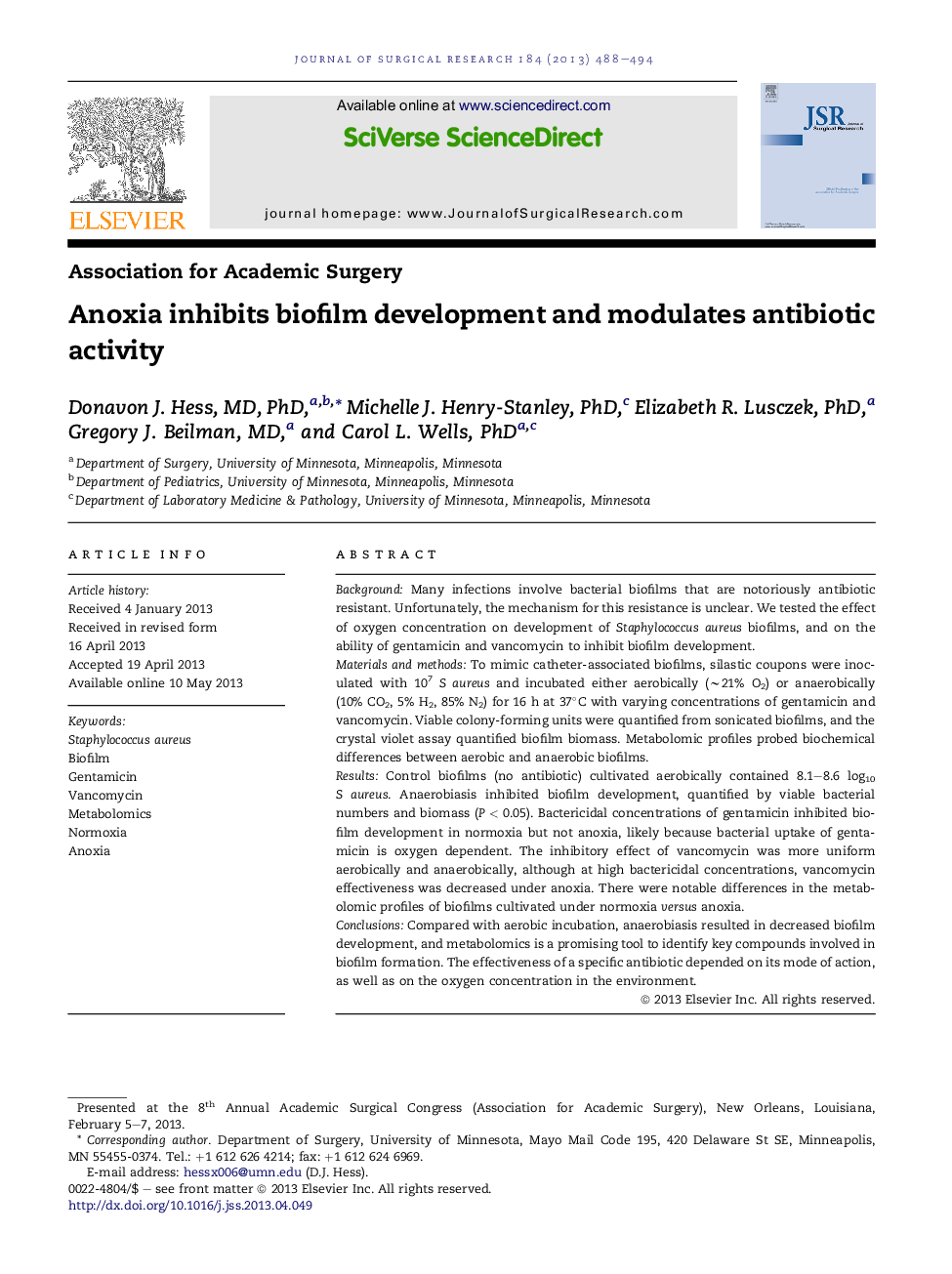| Article ID | Journal | Published Year | Pages | File Type |
|---|---|---|---|---|
| 4300638 | Journal of Surgical Research | 2013 | 7 Pages |
BackgroundMany infections involve bacterial biofilms that are notoriously antibiotic resistant. Unfortunately, the mechanism for this resistance is unclear. We tested the effect of oxygen concentration on development of Staphylococcus aureus biofilms, and on the ability of gentamicin and vancomycin to inhibit biofilm development.Materials and methodsTo mimic catheter-associated biofilms, silastic coupons were inoculated with 107S aureus and incubated either aerobically (∼21% O2) or anaerobically (10% CO2, 5% H2, 85% N2) for 16 h at 37°C with varying concentrations of gentamicin and vancomycin. Viable colony-forming units were quantified from sonicated biofilms, and the crystal violet assay quantified biofilm biomass. Metabolomic profiles probed biochemical differences between aerobic and anaerobic biofilms.ResultsControl biofilms (no antibiotic) cultivated aerobically contained 8.1–8.6 log10S aureus. Anaerobiasis inhibited biofilm development, quantified by viable bacterial numbers and biomass (P < 0.05). Bactericidal concentrations of gentamicin inhibited biofilm development in normoxia but not anoxia, likely because bacterial uptake of gentamicin is oxygen dependent. The inhibitory effect of vancomycin was more uniform aerobically and anaerobically, although at high bactericidal concentrations, vancomycin effectiveness was decreased under anoxia. There were notable differences in the metabolomic profiles of biofilms cultivated under normoxia versus anoxia.ConclusionsCompared with aerobic incubation, anaerobiasis resulted in decreased biofilm development, and metabolomics is a promising tool to identify key compounds involved in biofilm formation. The effectiveness of a specific antibiotic depended on its mode of action, as well as on the oxygen concentration in the environment.
